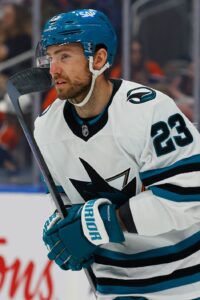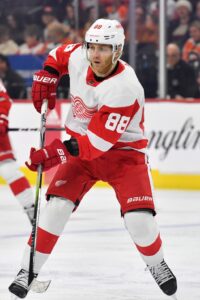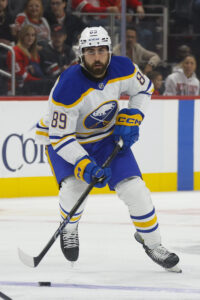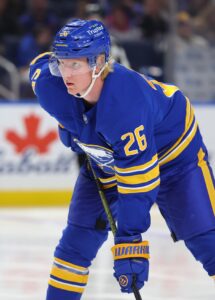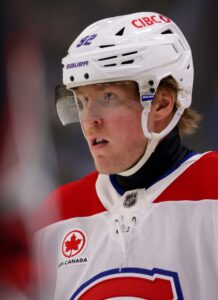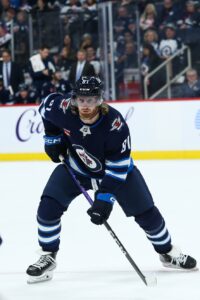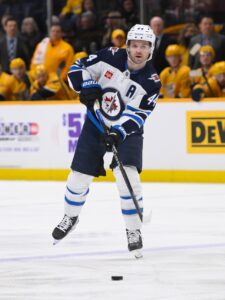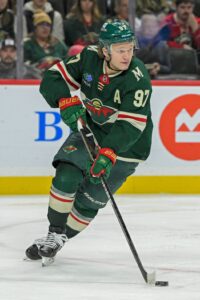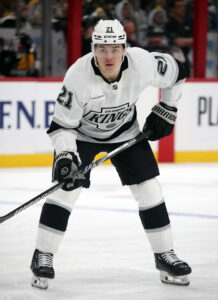Topics in this edition of the PHR Mailbag include why we might have to wait a while for a coaching change, possible trade frameworks for a pair of Blues veterans, and much more. If your question doesn’t appear here, check back in one of our next two mailbag columns.
letsgonats: At the 1/4 point, which NHL playoff teams from last year will not make it? The East, in particular, is so pinched together that it looks like three or four teams will be fighting for a spot on the last game of the season.
Also, how likely are the Capitals to figure out their power play? They are dominating 5×5 but anemic on the power play?
For playoff teams from last season missing this year, I could see Montreal slipping out. Yes, their goaltending should turn around but they’re also scoring at an unsustainable rate. Between that and several key injuries, it wouldn’t shock me if they go from just make to just miss. I’m not ready to write off Toronto just yet but it’s heading in that direction, especially if they can’t get both goalies healthy at the same time which was a huge part of their success a year ago. Florida’s trending that way as well but they’ve earned the benefit of the doubt this early. And with the East being so close, all of this could change depending on what types of injuries we see over the next few months. That’s the biggest wild card of them all.
In the West, I have a hard time seeing St. Louis getting out of its tailspin. This feels like a year where they decide to move a couple of veterans and do a quick reset. Edmonton’s out right now but at some point, they’re going to get going. Winnipeg is out and could be in some trouble if they don’t start treading water soon until Connor Hellebuyck returns but it’s too early to predict they won’t bounce back; they’ve earned a longer leash.
As for Washington’s power play, it’s around 2% below the league average this season. That’s not great by any stretch but with how it was last season (23.5%) with largely the same personnel, I think there’s a good chance it rebounds to at least league-average level. That’s still going to come in a few percent below where they were a year ago but if they’re around the middle of the pack, that’s at least a step up from where they are now.
mister noons: Who do you have finishing bottom two in each conference?
As of this asking the bottom five in the West are WPG, STL, NAS, CGY, VAN. In the East, it is DET, OTT, TOR, FLA, BUF.
For the West, I think Calgary is going to be there. Without Dustin Wolf dragging them to competitiveness, we’re now seeing the roster we thought we’d see a year ago, one that has some pieces but isn’t good enough. And with Rasmus Andersson looking like a safe bet to move, it’s probably going to get weaker. Right now, Nashville would have to be my other pick. I thought they’d be at least a bit better this season but they’re still near the bottom. And if they move out some veterans, it could get a bit worse. If St. Louis winds up selling more than I think they might, they could get into the mix as well.
The East is much harder to predict considering the bottom seems to change every few days. I want the answer to not be Buffalo just because that team needs to get going at some point but they can’t win away from home and seem to be stuck in a perpetual rut. They’re at least a safe pick. As I just noted, I can’t rule out Toronto and Florida from being playoff teams and there aren’t any pushovers in the Metropolitan this season which is rather surprising. There are some red flags with Detroit that make me think they could slip in the second half and given how tight the standings are, that might be enough to drop them to the bottom two. But I’m not very confident in that answer.
Gbear: Which Head Coach gets fired first (my pick is well known)?
If Nashville was going to make a move to try to save the season, I suspect they’d have done it already. Things aren’t going well in Buffalo but at this point, they’ll just let the season run out and let Lindy Ruff’s coaching contract expire as originally planned (and then probably shuffle him into a new role). Vancouver and Seattle aren’t doing much but have new head coaches so they’re not making changes so quickly. It’s rough in Calgary but Ryan Huska was extended not that long ago which buys him more time.
Where am I going with this? I wouldn’t be shocked if the first coaching firing came from a team with playoff expectations that doesn’t want to fall too far out of the race. If Edmonton doesn’t get going soon, Kris Knoblauch could be unfairly let go to try to shake things up without shaking up the roster. It would take some time to get to that point though. The other one that comes to mind is Jim Hiller and I write that as they’re in a playoff spot and a recent denial that they’re considering a change. But it’s a soft grip at best on a postseason position and GM Ken Holland didn’t hire him for the role. If the Kings falter over the next little while, that’s one that wouldn’t surprise me even though he’s done a decent job.
I don’t expect to see a lot of in-season firings. So many teams have changed coaches in the last 24 months which isn’t much of a shelf life for a coach. Owners don’t want to be paying a bunch of coaches not to coach so I expect we’ll see more patience, especially with the standings being tighter than usual.
lgr34561: Are there any players you think will be traded before the deadline that people are sleeping on?
If I could simply say ‘I don’t know’ here, this would be a time for me to use it. There is part of me that expects the trade market to not materialize much as the playoff salary cap is probably going to cut down on in-season swaps. With teams not really getting time to plan their rosters accordingly, this could be a quiet year. On the other hand, the level of parity could increase the number of buyers or teams willing to make ‘hockey trades’ in which case things would open up considerably and we could have a few deals that come out of nowhere.
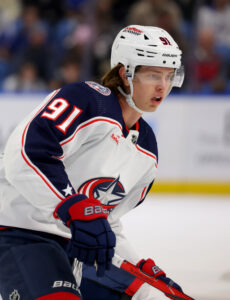 But that’s not a fun answer so I’ll take a stab at a sleeper trade candidate. Two years ago, Kent Johnson struggled, leading some to wonder about his future in Columbus. He signed a bridge deal and then had a breakout 57-point effort last season. However, he has really struggled out of the gate this year and some of those questions are back. But Johnson has shown enough to be appealing to some teams. The fact he has a center background (though he hasn’t played there lately) only helps his value. If there are ‘hockey trades’ coming where it’s an even swap of young core players, I could see Johnson being a viable candidate to be moved.
But that’s not a fun answer so I’ll take a stab at a sleeper trade candidate. Two years ago, Kent Johnson struggled, leading some to wonder about his future in Columbus. He signed a bridge deal and then had a breakout 57-point effort last season. However, he has really struggled out of the gate this year and some of those questions are back. But Johnson has shown enough to be appealing to some teams. The fact he has a center background (though he hasn’t played there lately) only helps his value. If there are ‘hockey trades’ coming where it’s an even swap of young core players, I could see Johnson being a viable candidate to be moved.
Gmm8811: If the Blues move on from Schenn or Faulk, what do you think a reasonable return for each would be? I’d prefer draft picks. Do they have to retain any money? Armstrong usually doesn’t like to do that.
Let’s answer these out of order. I don’t think St. Louis has to retain on either player in a trade. Brayden Schenn is a veteran center with enough of a track record to command a significant trade market and if the Blues are willing to take a player or two back to offset money short-term, that would work. Justin Faulk’s market probably won’t be as strong but with one less year left on his contract (he’s only signed through 2026-27), I think there are teams that would take on the full deal, as long as they could send a player or two back again.
However, while GM Doug Armstrong may not like to retain, the trade returns will undoubtedly be better if he did. That will have to be factored into the equation; is the extra value of the return worth the extra dead cap space? It wouldn’t shock me if it was.
As to what a return would look like, I know Schenn’s having a down year but I still think it starts with a first-round pick. The demand for centers is sky-high and that’s great news for the Blues. Last year, the believed ask was that plus two strong prospects including a high-end one. I don’t think that’s necessarily viable now but a first, a key prospect, and a young roster player (or one who is near-ready) could be doable. If St. Louis sells, I don’t see them embarking on a full-scale rebuild so the young roster player could very well be a crucial element of the return. If they have to take a more expensive player back to match money, that could ultimately expand the package a bit with the Blues adding a mid-round pick or equivalent asset.
With Faulk, a lot is dependent on if they retain or not. To stick with the premise of the question, I’ll take the no answer. In that case, the return St. Louis paid for Cam Fowler (a second and a prospect while also getting a fourth back) might be a reasonable equivalent while, again, possibly also taking someone back to balance the money. I’m not sure retaining would land them a first but it would probably give them a big boost in the caliber of the prospect coming back to them.
